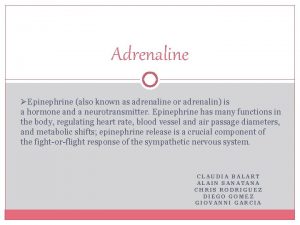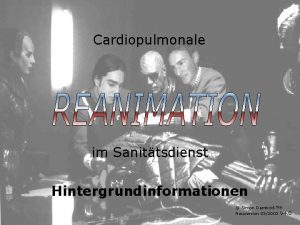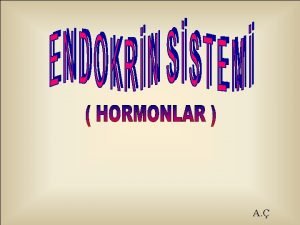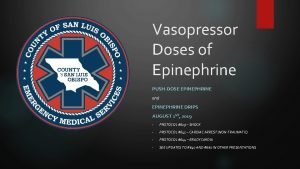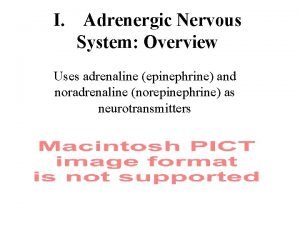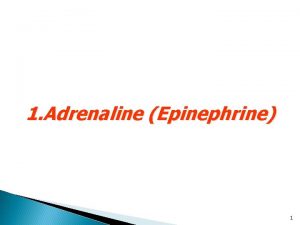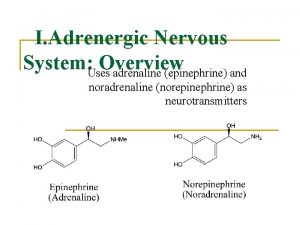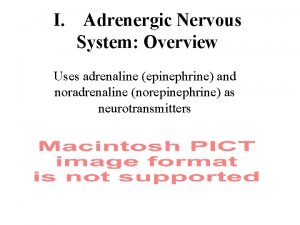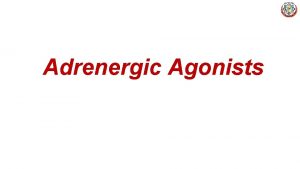Adrenaline Epinephrine also known as adrenaline or adrenalin










- Slides: 10

Adrenaline ØEpinephrine (also known as adrenaline or adrenalin) is a hormone and a neurotransmitter. Epinephrine has many functions in the body, regulating heart rate, blood vessel and air passage diameters, and metabolic shifts; epinephrine release is a crucial component of the fight-or-flight response of the sympathetic nervous system. CLAUDIA BALART ALAIN SANATANA CHRIS RODRIGUEZ DIEGO GOMEZ GIOVANNI GARCIA

Where is the hormone produced? �It is produced in the adrenal glands which sit atop the kidneys. Adrenalins is also referred to as epinephrine.

What are the target organs/structures of the hormone? �Adrenaline targets various organs, mainly the Heart, Blood vessels, Smooth muscles(of bronchi, uterus, gastrointestinal tract, bladder etc. ), the eye (radial muscles of iris), skeletal muscles (central nervous system also, but weak effect is seen there), metabolic actions (via liver).

How is the secretion of the hormone regulated/controlled?

What is the normal function of the hormone? �Adrenaline does several things for the body. It increases heart rate to help boost the supply of oxygen to muscles, begins processes to quickly break down sugar and fat, and cuts blood from the skin and stomach muscles to increase blood flow to muscles like the ones in arms and leg.

How does the hormone contribute to homeostasis �Adrenaline is a key determinant of responses to metabolic or global challenges to homeostasis, such as glucoprivation, and of manifestations of emotional distress. In contrast with the view that the sympathetic nervous and adrenomedullary hormonal systems function as a unit (the ‘sympathoadrenal system’) to maintain homeostasis in emergencies, across a variety of situations adrenaline responses are more closely linked to responses of the hypothalamic-pituitary-adrenocortical system than of the sympathetic nervous system.

What are the causes and symptoms of hyper secretion of the hormone? �Pheochromocytoma, hyperaldosteronism, virilization and Cushing's syndrome are diseases associated with hypersecretion of adrenal hormones. The adrenal gland produces hormones such as testosterone, cortisol and epinephrine. Adrenal diseases related to hyperfunction of the adrenal glands may be caused by factors that affect the glands themselves or the pituitary gland. Surgery and medications are treatment options for these diseases.

What diseases result from this condition? �Hyper secretion or over-production of cortisol by the adrenal glands causes Cushing's Syndrome. �Hyperaldosteronism is the result of aldosterone overproduction by the adrenal glands, while pheochromocytoma is associated with excessive production of catecholamines by the adrenal glands. �Virilization occurs when the adrenal glands produce high amounts of androgens such as testosterone.

What are the treatments for under or over activation of the hormone pathway?

How, if at all, is the hormone used clinical or commercially? �Epinephrine injection is used along with emergency medical treatment to treat life-threatening allergic reactions caused by insect bites or stings, foods, medications, latex, and other causes.
